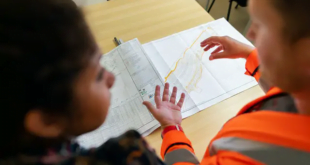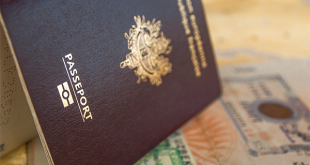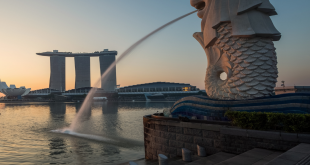Singapore, often referred to as the “Lion City”, though one of the smallest countries globally, is a powerful economic player. It is a city-island, known for its cosmopolitan nature and diverse multicultural heritage – Chinese, Malays, Indians, Eurasians – all united under a strong Singaporean identity. Over time, expatriates have further enriched this cultural diversity with their own traditions. In this article, we delve deep into the heart of Singapore culture and traditions to uncover the fascinating customs, festivals, and practices that make this city-state truly special.
Read here the main reasons to study abroad in Singapore.
Table of Contents
What are the top cultures in Singapore?
Singapore’s multicultural heritage is the cornerstone of its identity. The nation is a melting pot of various ethnicities. Therefore, this rich cultural tapestry is evident in the daily lives of its residents, reflected in their customs, language, and cuisine.
The Influence of Chinese Culture in Singapore
Singapore has a significant Chinese population. And their influence is palpable throughout the country. From traditional Chinese temples adorned with intricate carvings to the lively Chinatown district, the Chinese cultural heritage is deeply ingrained in Singapore’s fabric.
Embracing Malay Traditions
The Malay community plays an essential role in shaping Singapore’s cultural landscape. The traditional art of batik, with its vibrant patterns, is a prominent feature of Malay heritage. Hari Raya Puasa, the festival that marks the end of Ramadan, is celebrated with great enthusiasm, where Muslims come together to pray and enjoy traditional delicacies.
The Richness of Indian Culture
Indian culture thrives in Singapore, bringing its distinct flavors and colors to the nation. Deepavali, the festival of lights, is a grand celebration of the triumph of light over darkness. Little India, a bustling neighborhood, offers a glimpse into the vibrant Indian traditions through its aromatic spice markets and ornate temples.
Peranakan Heritage
The Peranakan community, also known as the Straits-born Chinese, is a unique blend of Chinese and Malay influences. They preserve the culture through the captivating Peranakan shop houses and the delectable Nyonya cuisine.
Singapore Culture and Traditions: Keeping Traditions Alive
Singapore’s traditions are essential in shaping the nation’s identity and fostering unity among its diverse population. They provide a sense of belonging and contribute to the rich tapestry of this multicultural society.
As Singapore continues to evolve, modern influences have started to impact traditional values. While the younger generation embraces change, efforts are made to preserve and pass down cultural heritage to future generations.
Here are some unique ways the culture and traditions are in display in Singapore.
Family Culture in Singapore
Family is highly valued in Singaporean culture. And there is a strong emphasis on maintaining close family ties. Multigenerational households are still common, with grandparents often living with their adult children and grandchildren.
Moreover, there is a deep-rooted respect for elders. Children learn to show deference and filial piety to their parents and grandparents. And it’s not uncommon to consult older family members for advice and decisions.
Furthermore, food is an integral part of Singaporean family culture. Eating together is a common way for families to bond, and it’s not uncommon for family members to cook and share meals, on regular weekdays as well as on special occasions.
Lastly, academic achievement and education remain a strong emphasis on the family culture and traditions in Singapore. Parents often play an active role in their children’s education. And children are often encouraged to excel academically.
Religious Tolerance and Harmony
Singapore is a shining example of religious harmony, where various religious groups coexist peacefully. And they do so through policies that promote mutual respect and understanding among different religious groups. Moreover, the government encourages interfaith dialogues and organizes events that celebrate the diversity of religious practices. That’s how during festive seasons, the entire nation comes together to celebrate as one, regardless of their cultural background.
Multilingualism in Communication
Singapore’s linguistic diversity is truly remarkable. English, Malay, Mandarin, and Tamil are all official languages, reflecting the nation’s commitment to inclusivity. Moreover, this linguistic diversity reflects the multicultural society, where most Singaporeans are bilingual or even trilingual.
Art and Architecture: Blending the Old with the New
Singapore’s architecture is an intriguing mix of modern skyscrapers and historic buildings. The city’s commitment to preserving its heritage can be seen in the beautifully restored shop houses and landmarks. Another way they keep their traditional art forms also involves supporting artists, promoting cultural events, and encouraging the passing down of knowledge from one generation to another.
Singapore Culture: Traditional Festivals and Celebrations
Singapore’s multiculturalism is a source of national pride. Each ethnic group has its own set of customs and practices, which are often showcased during various festivals and events. These festivals not only unite the locals but also attract visitors from all over the world.
Here are some of the major festivals and celebrations that take place throughout the year in Singapore:
Chinese New Year
Chinese New Year is one of the most significant festivals celebrated by the Chinese community in Singapore. The streets come alive with vibrant decorations, and families gather for reunion dinners, lion and dragon dances, and the exchange of red packets for good luck. There is also the famous Chingay Parade, a street parade with dazzling floats and vibrant performances. Since 1973, this parade is an annual event that epitomizes Singapore’s multicultural essence.
Hari Raya Puasa
Hari Raya Puasa, also known as Eid al-Fitr, marks the end of Ramadan for the Malay community. It is a time of forgiveness and joy, with colorful decorations adorning homes and families wearing traditional Malay attire.
Deepavali
Deepavali, the Festival of Lights, is celebrated by the Indian community. It symbolizes the victory of light over darkness. And the celebrations include the lighting of oil lamps, colorful rangoli designs, and the sharing of sweets and gifts.
Christmas
Christmas in Singapore is a joyful occasion for Christians and non-Christians alike. Orchard Road, the city’s famous shopping belt, transforms into a dazzling display of lights and decorations.
Singapore’s Grand National Day Parade
Every year on the 9th of August, Singaporeans come together to celebrate their National Day. The event stands out with a grand parade showcasing the nation’s achievements, a spectacular display of fireworks, and vibrant cultural performances.
Thaipusam
Thaipusam is a significant Hindu festival celebrated with immense fervor. Devotees carry ornate kavadis (burdens) and pierce their bodies with hooks and skewers as a form of penance and devotion.
Dragon Boat Festival: Racing to Honor Qu Yuan
The Dragon Boat Festival, also known as Duanwu Jie, commemorates the Chinese poet Qu Yuan. Teams compete in dragon boat races, and friends and family share rice dumplings, known as zongzi.
Singapore Food Culture: A Gastronomic Adventure
It won’t be fair to talk about the culture and traditions in Singapore without mentioning the food and cuisine. Singapore’s culinary landscape mirrors its diverse culture. Therefore, the local cuisine, a fusion of flavors from different cultures, is a treat for food enthusiasts.
Hawker Centers: A Gastronomic Wonderland
Hawker centers are a quintessential part of Singaporean culture. These bustling food courts offer an array of dishes, from savory Hainanese chicken rice to mouthwatering laksa.
Peranakan Delicacies: Nyonya Cuisine
Nyonya cuisine, a blend of Chinese and Malay flavors, is a unique and delightful culinary experience. Also, dishes like ayam buah keluak and kueh lapis showcase the Peranakan heritage.
Chili Crab: Singapore’s Iconic Dish
No culinary journey in Singapore is complete without trying the renowned chili crab, a sumptuous seafood delicacy cooked in a rich, spicy sauce.
Kaya Toast: The Traditional Breakfast in Singapore
Kaya toast, a delectable breakfast option, consists of crispy toast spread with kaya (coconut and egg jam) and served with soft-boiled eggs and coffee.
Satay: Grilled Perfection
Satay, skewered and grilled meat served with peanut sauce, is mouthwatering street food that tantalizes the taste buds.
Singapore Work and Business Culture
International students, who are holders of a student pass in Singapore can work a maximum of 16 hours during school days and full-time during vacations. It’s then important for them to get familiar with the work and business culture in the city.
Firstly, Singapore’s work culture leans heavily towards a group-focused, hierarchical approach, emphasizing strict adherence to numerous rules.
Hierarchy
Singapore places a strong emphasis on respect for authority, and organizations have distinct lines of authority. Junior employees must follow directions from higher-ups. However, multinational companies may have simpler hierarchies.
Age Considerations
Age plays a significant role in the organizational hierarchy. Younger employees may not be considered as valuable as experienced ones. Therefore, treating senior employees with respect is vital.
Teamwork and Collaboration
Singapore’s work culture values teamwork and group achievements over individual success. Moreover, a collective sharing of responsibilities is appreciated.
Dress Code
Employees generally follow a formal dress code, with specific attire for both men and women, though it may vary depending on the company’s policies.
Government Rules
The Singapore government has rules and regulations governing workplaces and employee interactions. The main goal of these regulations is to prioritize welfare and safety.
Working Hours
The Singaporean Employment Act has set the maximum working hours at 12 hours per day. However, regular employee hours can be either up to 9 hours a day for 5 days a week or up to 8 hours a day for more than 5 days a week. This brings the total number of hours worked per week to 45 (in full-time mode). When it comes to overtime, you can get up to 72 hours monthly, with a payment of at least 1.5 times more than your basic work rate.
A Few Tips to Avoid Cultural Mistakes While You Study in Singapore
Singapore is an amazing place. But like any country, it has its own set of cultural norms and taboos. And you should be aware of them to avoid any awkward situations, whether at school, at work or in public places.
No Spitting, Chewing Gum, or Smoking in Public
You’ll notice anytime soon that in Singapore, they take cleanliness seriously. And these behaviors are major faux pas. So, if you’re a smoker, don’t fret; there are designated smoking areas where you can puff away.
Watch Your Words
In Singapore, it’s a big deal not to publicly criticize religion, politics, crime and punishment, or bureaucracy. We all have opinions, but you don’t want to get on the wrong side of the law here. And if you’re not careful with your words, you might end up facing some serious consequences, like getting arrested or fined.
At Work, Mind Your Manners with Your Superiors
In Singapore, you should be mindful of the cultural differences, especially when it comes to dealing with someone of higher authority. Avoid at all cost publicly correcting a superior. They value respect and hierarchy, so it’s best to address any concerns in a private and respectful manner.
Be Careful Where You Put Your Hands and Feet
Physical contact with someone from the opposite sex in Singapore is only for those who are related or married. So, unless you fall into one of those categories, keep your hands to yourself! Also, avoid touching someone’s face or head, that’s a personal boundary you shouldn’t cross.
Pointing and Standing a Certain Way are Rude and Impolite
Pointing with your finger (index) is a big no-no in Singapore. It’s seen as rude and impolite. Also, avoid touching things with your feet. Singaporeans consider feet unclean. It’s therefore best to keep them on the ground where they belong! Additionally, standing with your hands on hips is perceived as aggressive in Singapore. So, make sure to keep your hands down and maintain a friendly and approachable demeanor.
Business Card Etiquette
Last but not least, when it comes to exchanging business cards, Singaporeans have their own rules. And it’s all about showing respect and politeness. Traditionally, you give or receive business cards with two hands as a sign of respect. It’s a small gesture that goes a long way in making a positive impression.
Conclusion
Culture and traditions in Singapore are a testimony to the nation’s ability to maintain its unique identity while embracing the globalized world. The vibrant festivals, mouthwatering cuisine, and harmonious coexistence of different cultures make Singapore a truly remarkable destination. As the Lion City roars with pride, it continues to inspire the world with its rich heritage and forward-looking spirit.
This post is also available in ar.




 Aljawaz Your guide to study abroad
Aljawaz Your guide to study abroad










